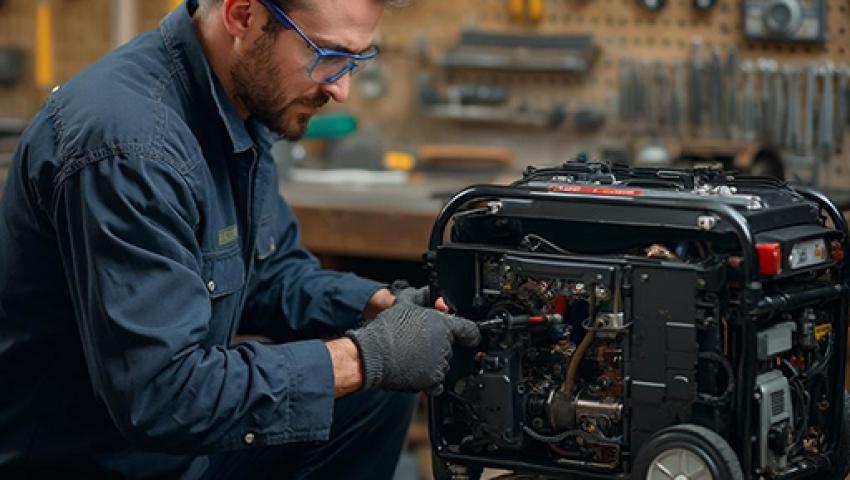
تركيب المولدات
This definitive guide covers all critical aspects of professional generator installation, from site preparation to final testing, helping you make informed decisions for your residential, commercial, or industrial power needs.
The Complete Guide to Professional Generator Installation: Ensuring Reliable Backup Power
Introduction
Proper generator installation is the foundation for years of reliable backup power. Unlike simple plug-and-play devices, generators require careful planning, professional expertise, and compliance with numerous safety standards. A correctly installed generator operates at peak efficiency, while improper installation can lead to dangerous situations and costly repairs.
This definitive guide covers all critical aspects of professional generator installation, from site preparation to final testing, helping you make informed decisions for your residential, commercial, or industrial power needs.
Pre-Installation Planning: The 5 Critical Steps
1. Load Calculation & Sizing
Conduct professional load analysis (NEC Article 220)
Consider starting vs. running watts (especially for motor loads)
Future expansion capacity (recommend 20-25% buffer)
2. Site Selection Factors
NFPA 110 clearance requirements (minimum 5 feet from structures)
Accessibility for maintenance
Noise considerations and local ordinances
Flood zone evaluation
3. Fuel Source Considerations
| Fuel Type | Pros | Cons |
|---|---|---|
| Diesel | Long shelf life, high efficiency | Higher emissions |
| Natural Gas | Continuous supply, clean burning | Pipeline dependency |
| Propane | Clean, stable storage | Lower energy density |
| Bi-Fuel | Flexibility | Complex system |
4. Permitting & Compliance
Local building codes
EPA emissions regulations
NEC (National Electrical Code) requirements
Fire department approvals
5. Utility Coordination
Required for automatic transfer switches
Interconnection agreements
Metering considerations
Professional Installation Process: Step-by-Step
Phase 1: Foundation & Mounting
Concrete pad specifications (4" minimum thickness, steel reinforced)
Vibration isolation mounts
Weatherproof enclosures for outdoor units
Phase 2: Electrical Connections
Transfer switch installation (NEC Article 700)
Proper grounding (IEEE 142 standards)
Conduit and wiring specifications
Phase 3: Fuel System Installation
Double-walled piping for safety
Leak detection systems
Fuel polishing integration
Phase 4: Ventilation & Exhaust
Combustion air requirements (NFPA 37)
Exhaust pipe routing (minimum 10' from air intakes)
Spark arrestors for hazardous locations
Phase 5: Control Systems
Automatic start/stop configuration
Remote monitoring integration
Load management programming
Common Installation Mistakes to Avoid
Undersizing Conductors
Causes voltage drop and overheating
Solution: NEC Table 310.16 compliance
Improper Transfer Switch Location
Creates dangerous backfeed situations
Solution: Install within sight of main panel
Inadequate Airflow
Leads to overheating and derating
Solution: Follow manufacturer's clearance specs
Poor Fuel Line Routing
Risk of leaks or vapor lock
Solution: Slope pipes properly (1/4" per foot)
Ignoring Local Codes
Results in failed inspections
Solution: Hire licensed installers familiar with area requirements
Post-Installation Testing & Commissioning
Startup Procedures
Initial oil/filter change (manufacturer break-in requirements)
Load bank testing (minimum 2 hours at 80% load)
Harmonic distortion measurement
Performance Verification
Voltage regulation (±1%)
Frequency stability (60Hz ±0.5%)
Transient response testing (<10% dip, <2 sec recovery)
Owner Training
Normal operation procedures
Emergency shutdown protocols
Maintenance schedule review
Case Study: Hospital Generator Installation
Challenge:
500-bed facility needing N+1 redundancy for life safety loads
Our Solution:
Installed (2) 750kW diesel generators with paralleling gear
Compliant with NFPA 99 and 110 requirements
48-hour fuel supply with automated monitoring
Results:
Passed Joint Commission inspection first try
Zero downtime since installation (3 years)
12% better fuel efficiency than specified
Why Professional Installation Matters
Safety Assurance
Proper arc flash protection
Correct grounding/bonding
Carbon monoxide prevention
Warranty Protection
Most manufacturers void warranties for DIY installs
Required for extended service agreements
Long-Term Reliability
Optimized system performance
Reduced maintenance costs
Extended equipment lifespan
Generator Installation Cost Factors
| Component | % of Total Cost |
|---|---|
| Generator Unit | 45-55% |
| Transfer Switch | 15-20% |
| Electrical Work | 12-18% |
| Fuel System | 8-12% |
| Permits/Fees | 5-8% |
*Typical ROI: 3-5 years for commercial installations*
Conclusion
Professional generator installation is a complex process that demands technical expertise and attention to detail. By investing in proper installation from certified professionals, you ensure:
✅ Compliance with all safety standards
✅ Optimal system performance
✅ Full manufacturer warranty coverage
✅ Long-term reliability
🔧 Ready for a flawless installation? Contact our factory-certified installation team today for a free site assessment and quote.
